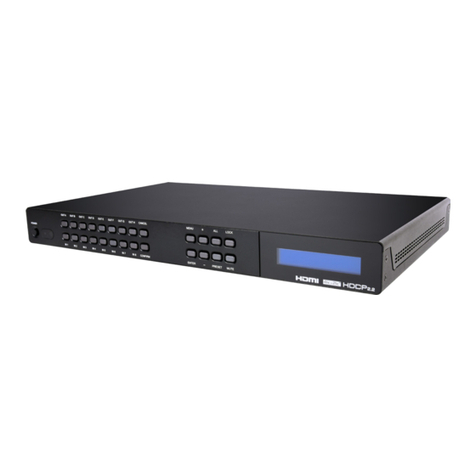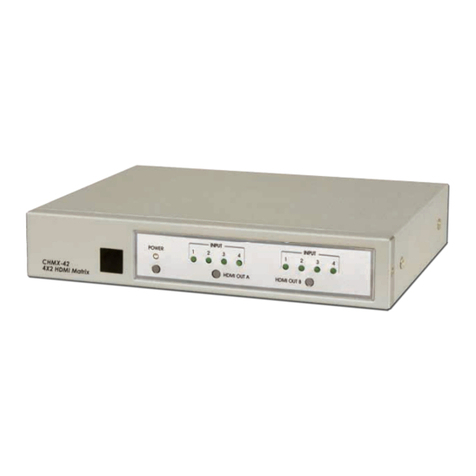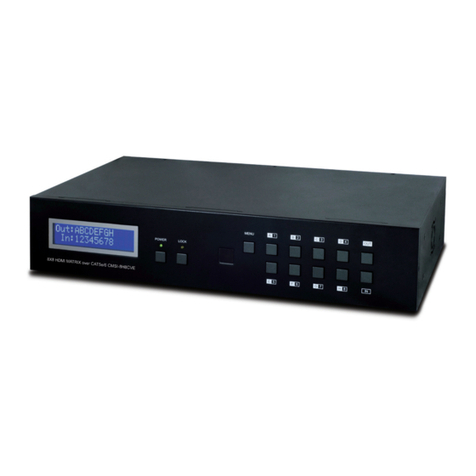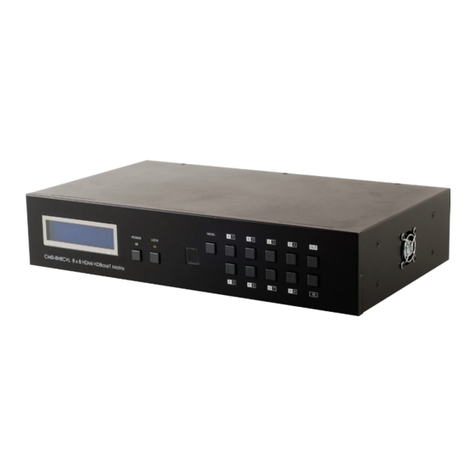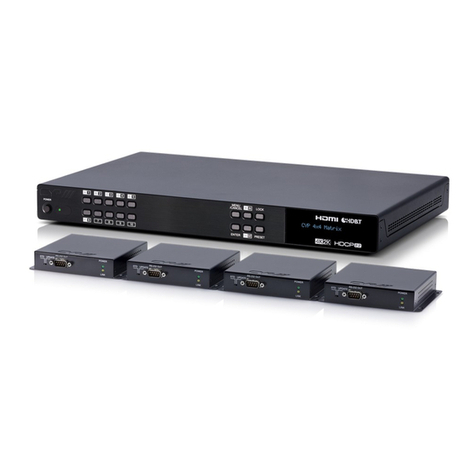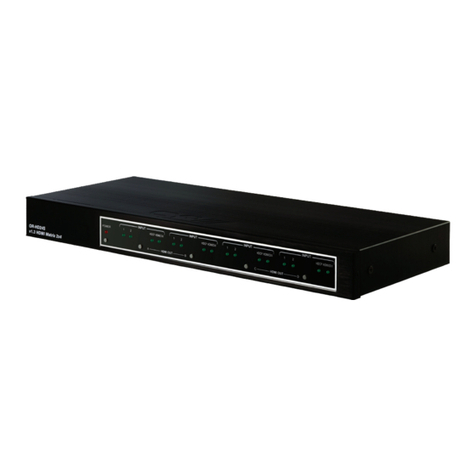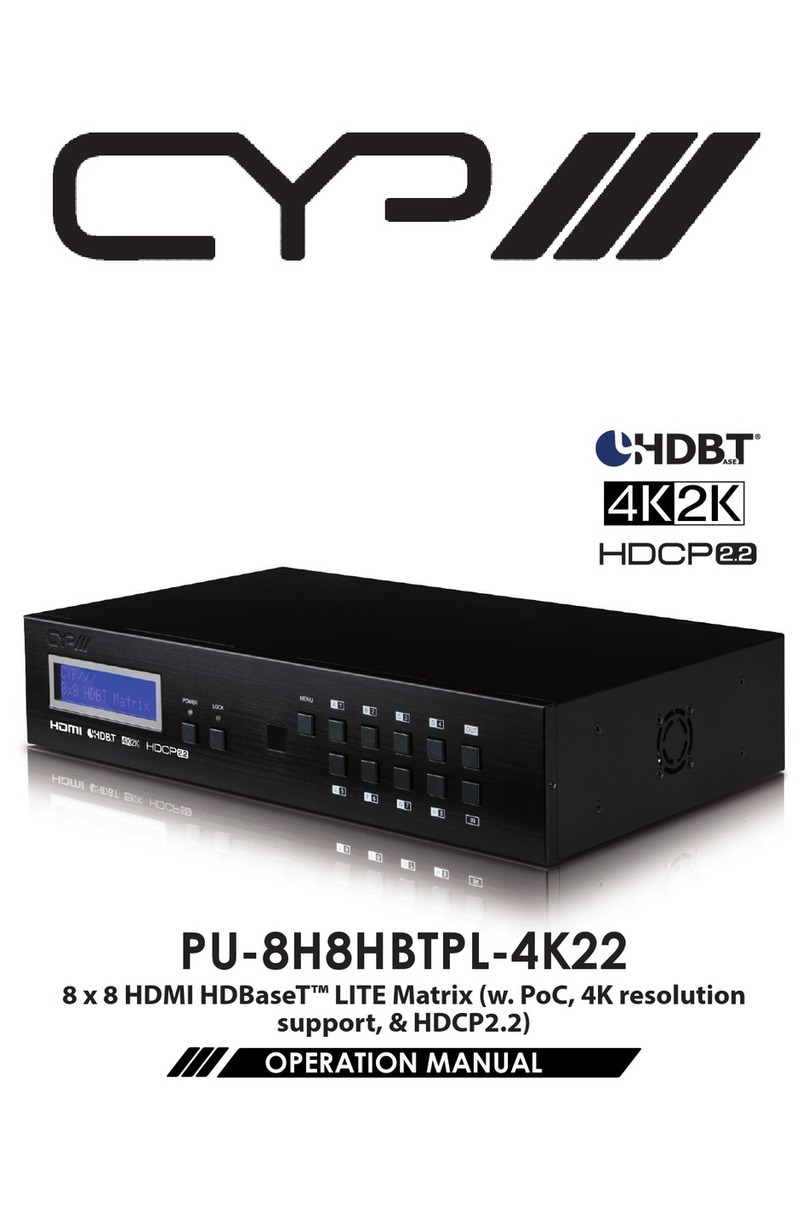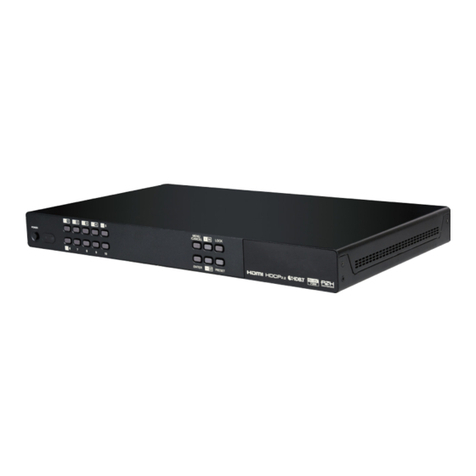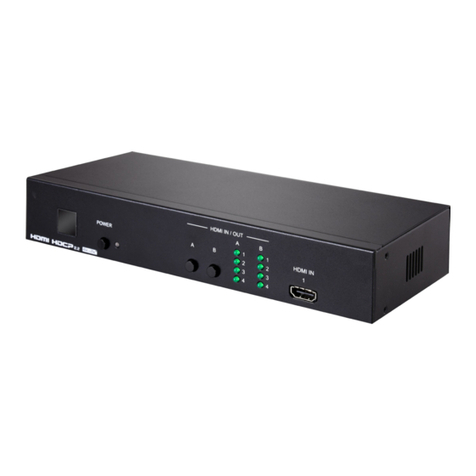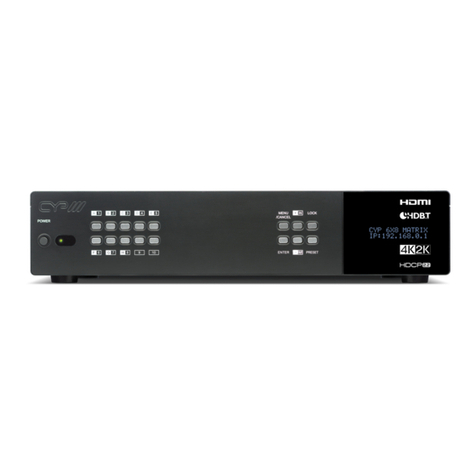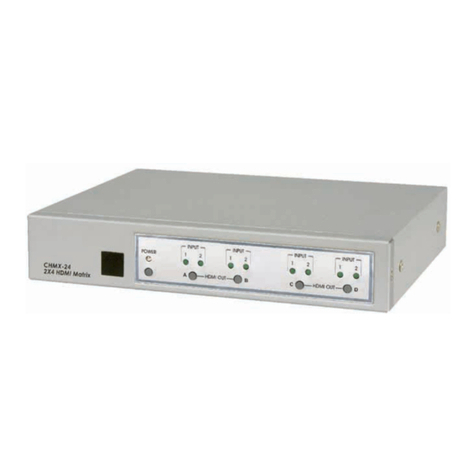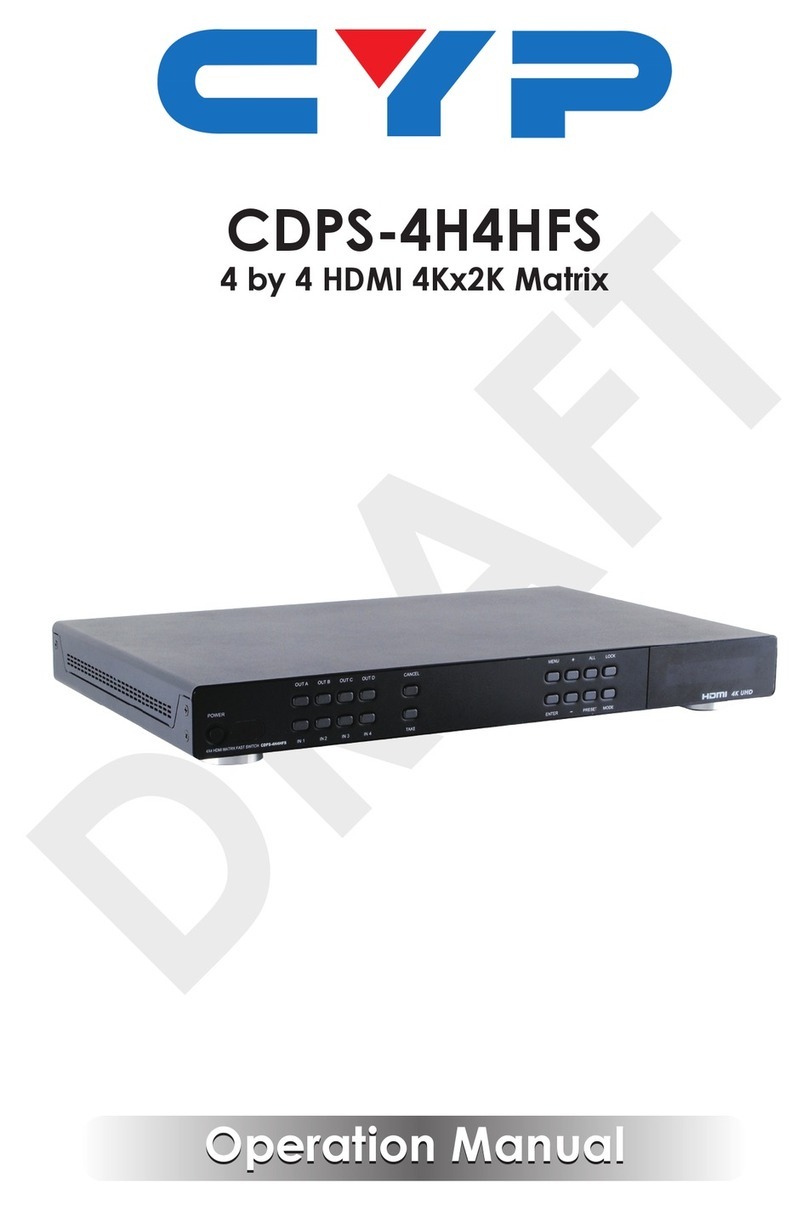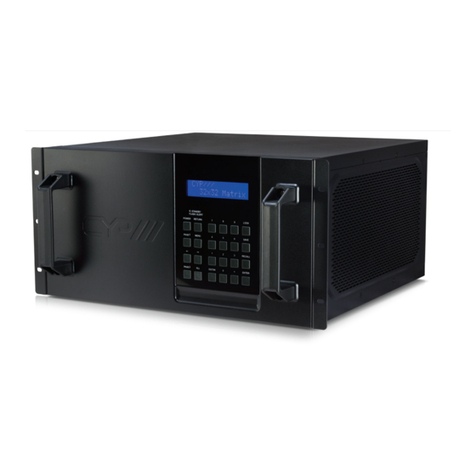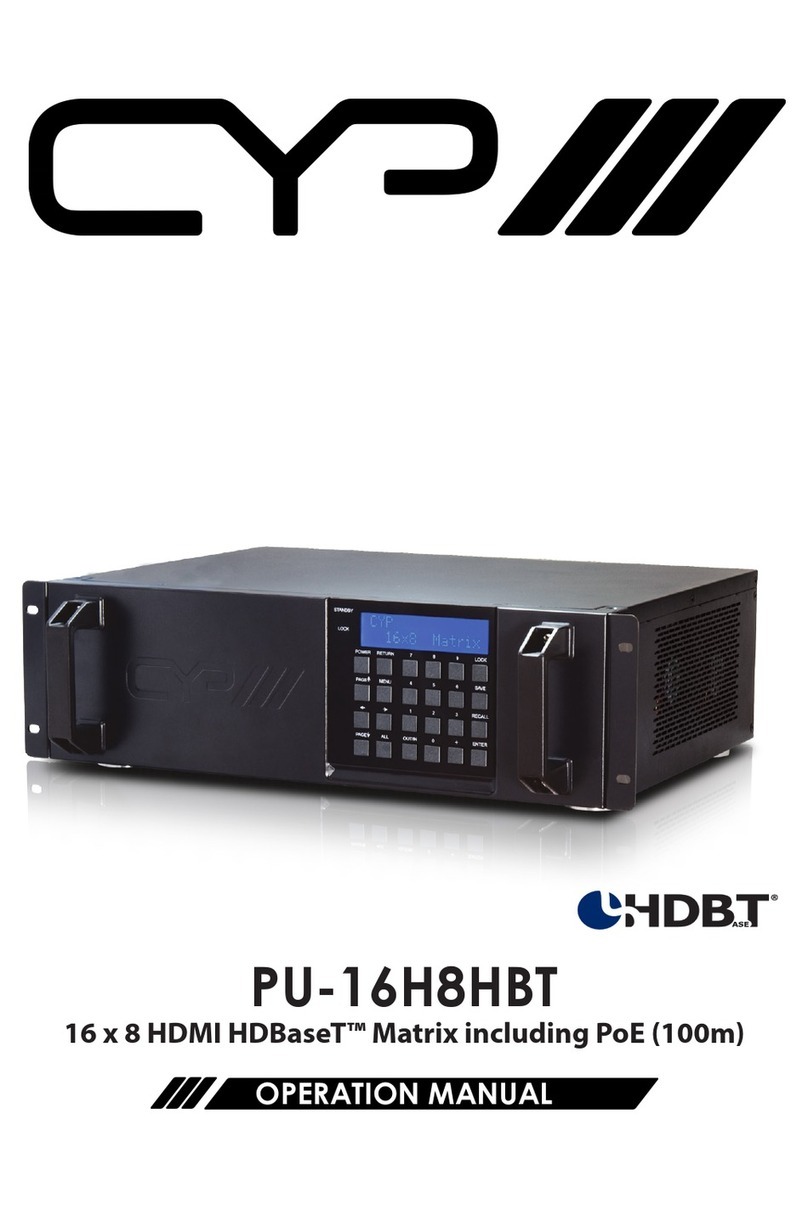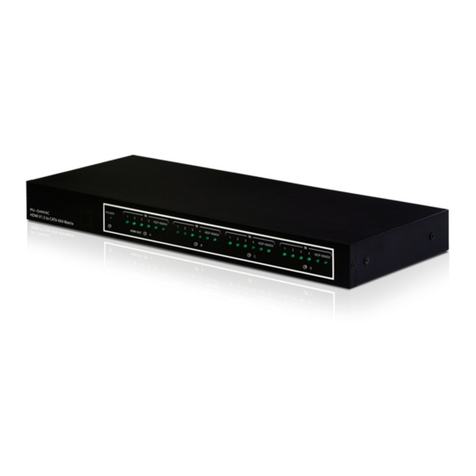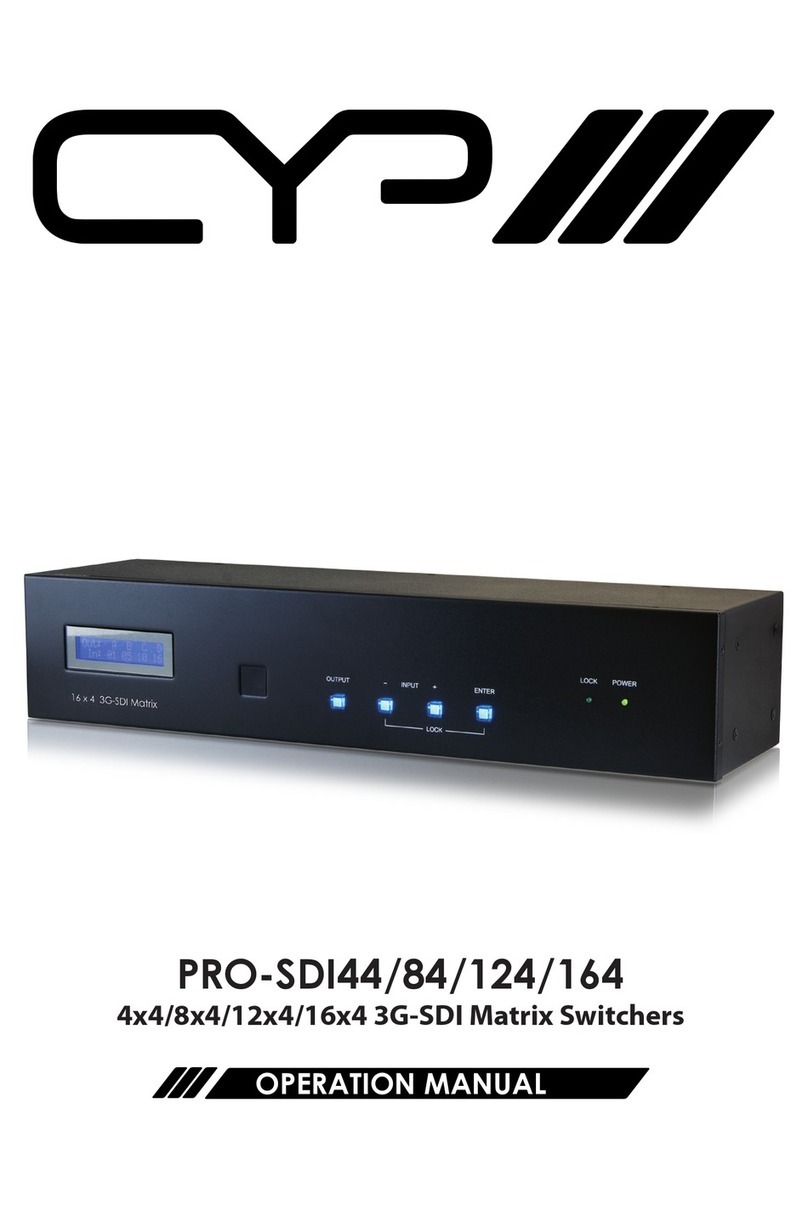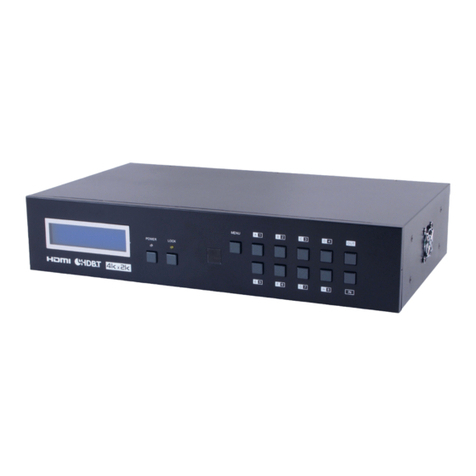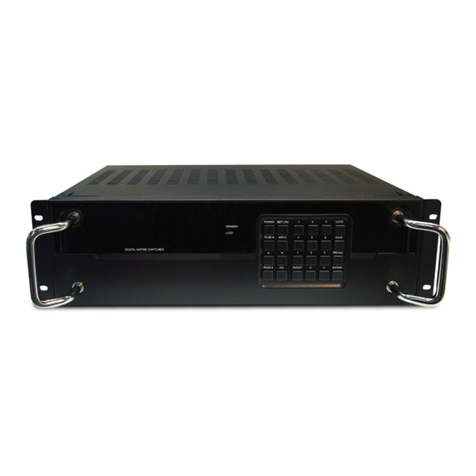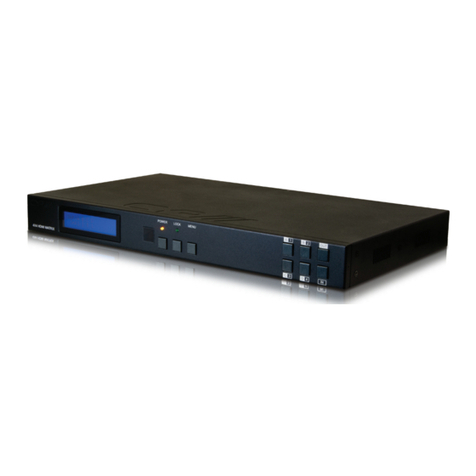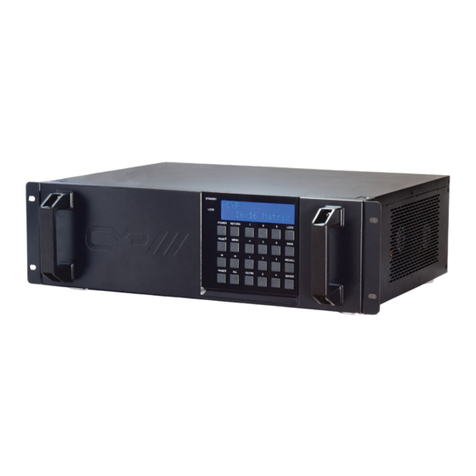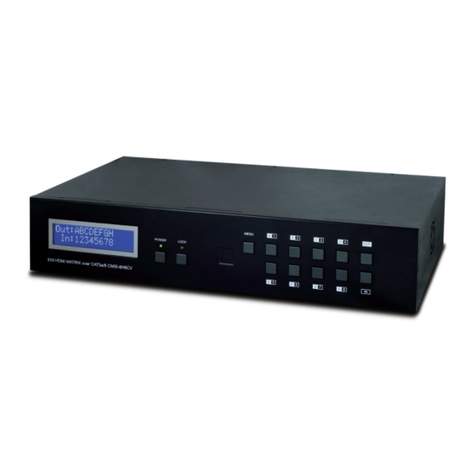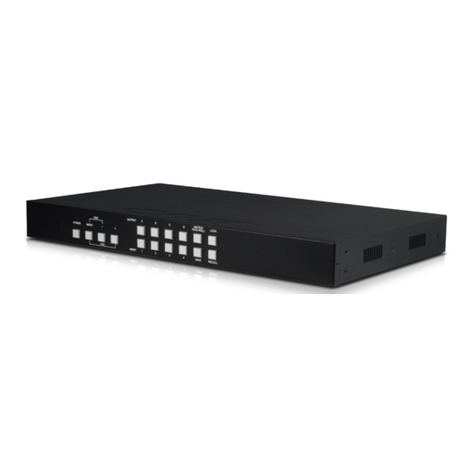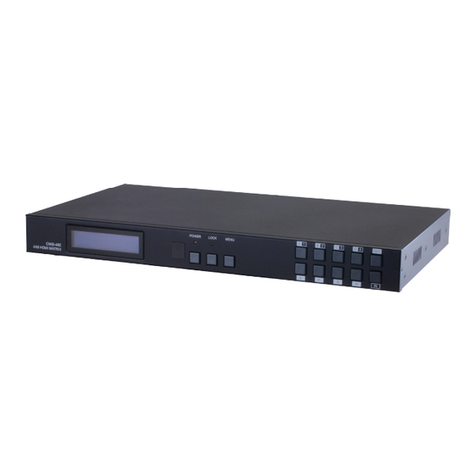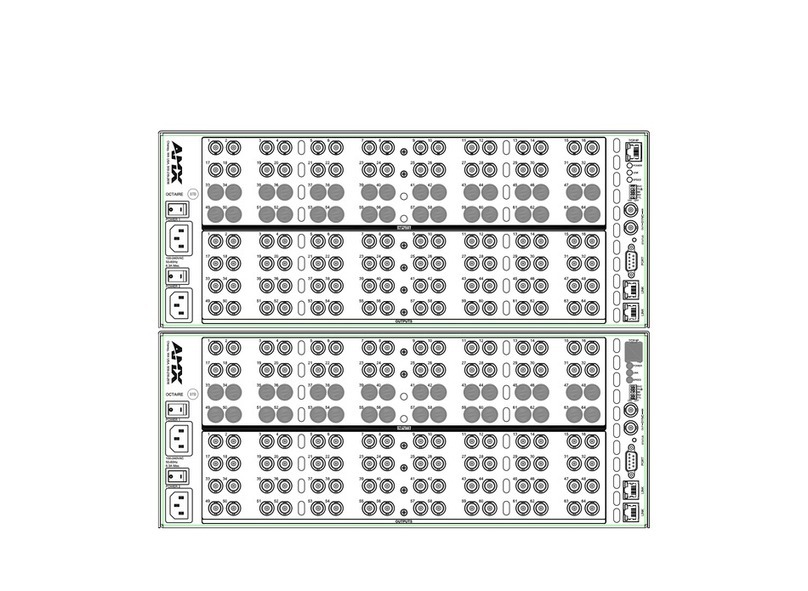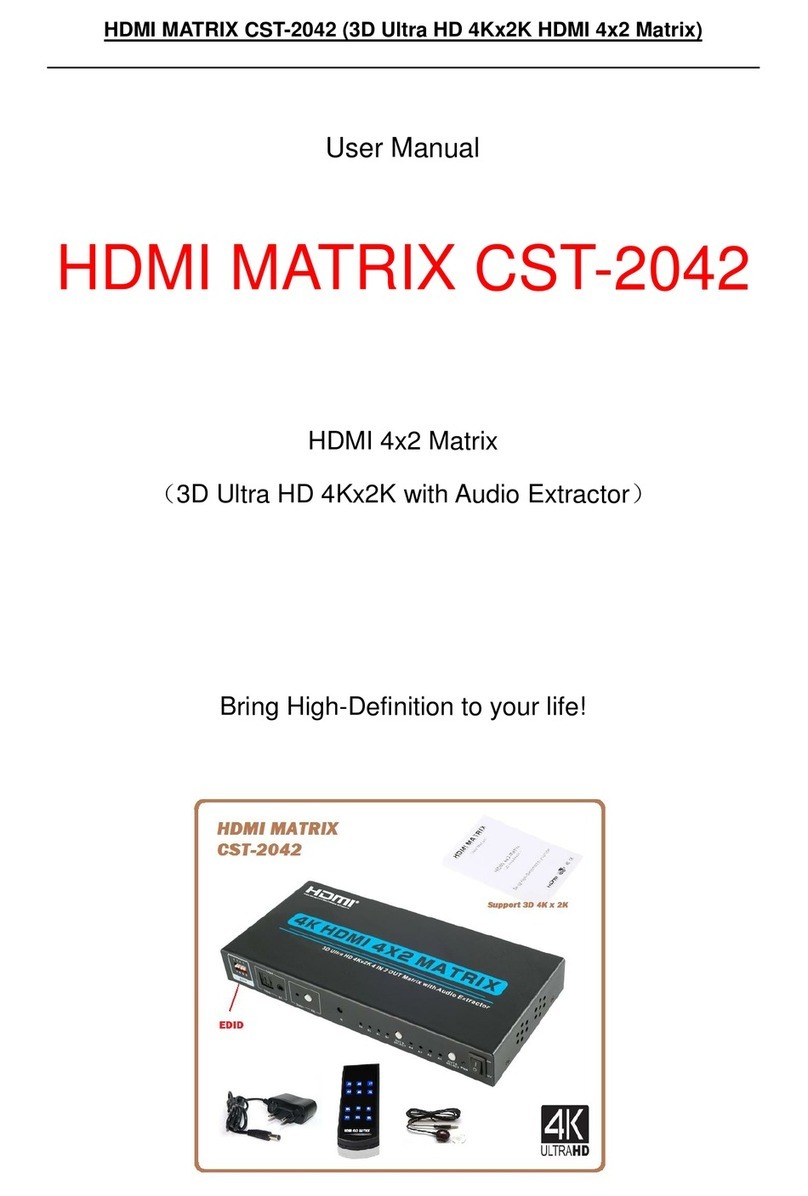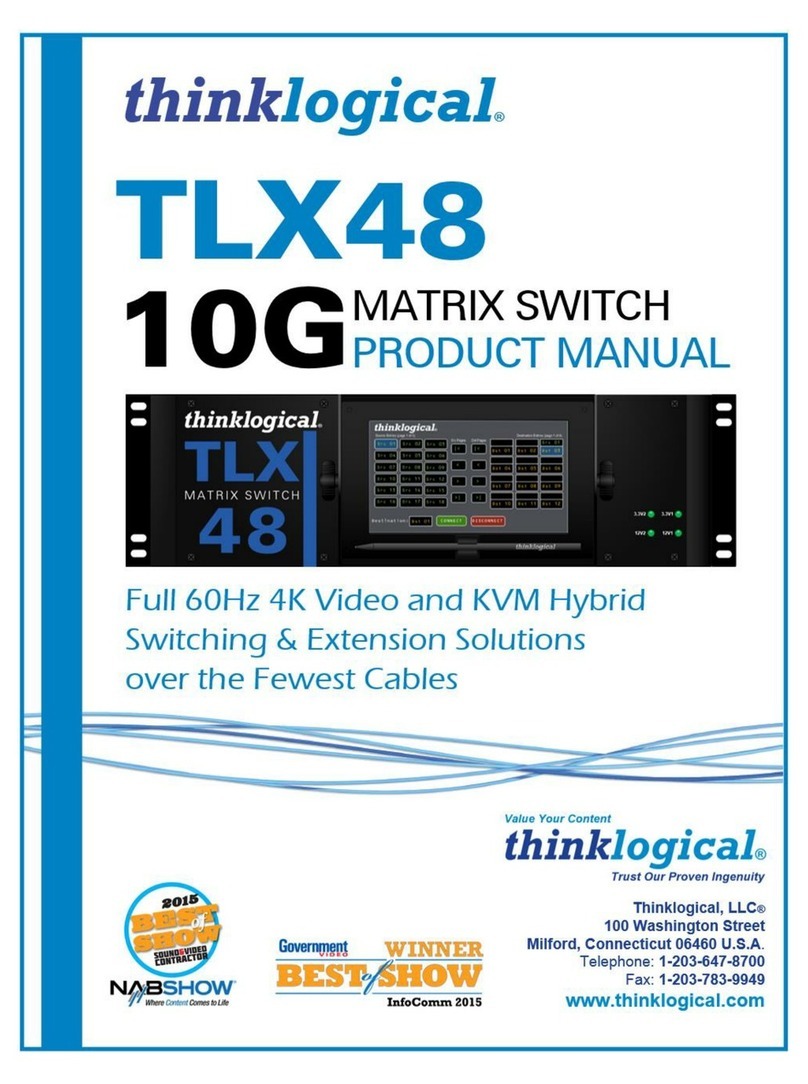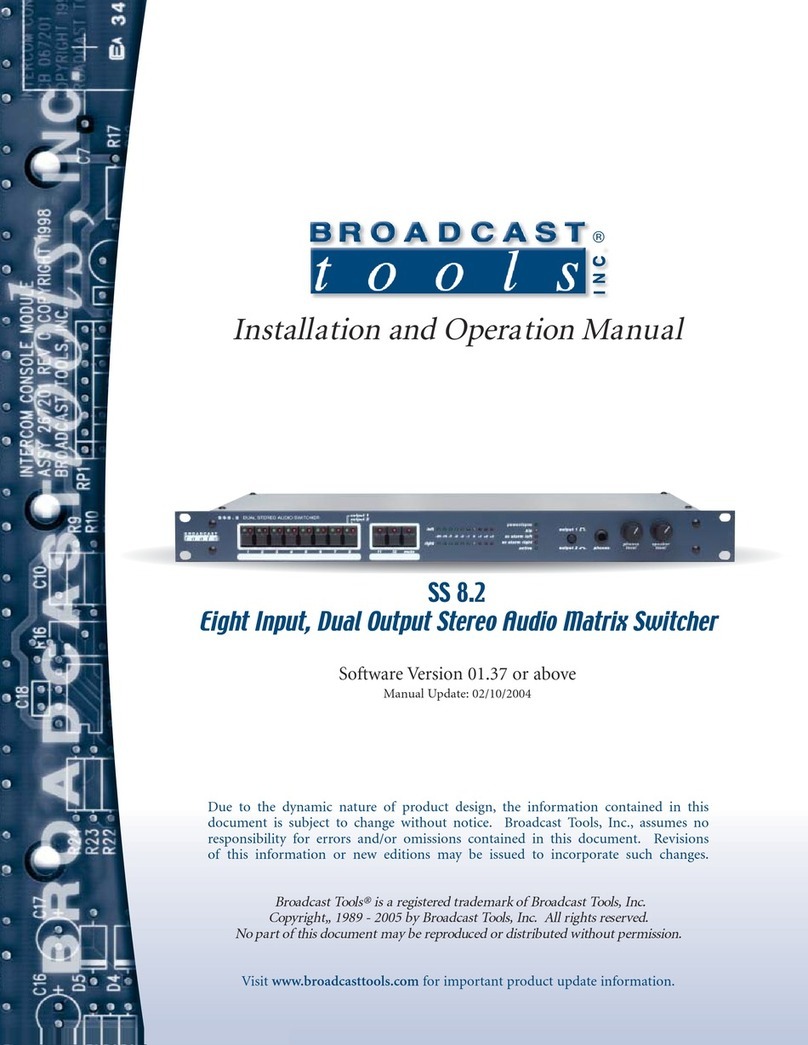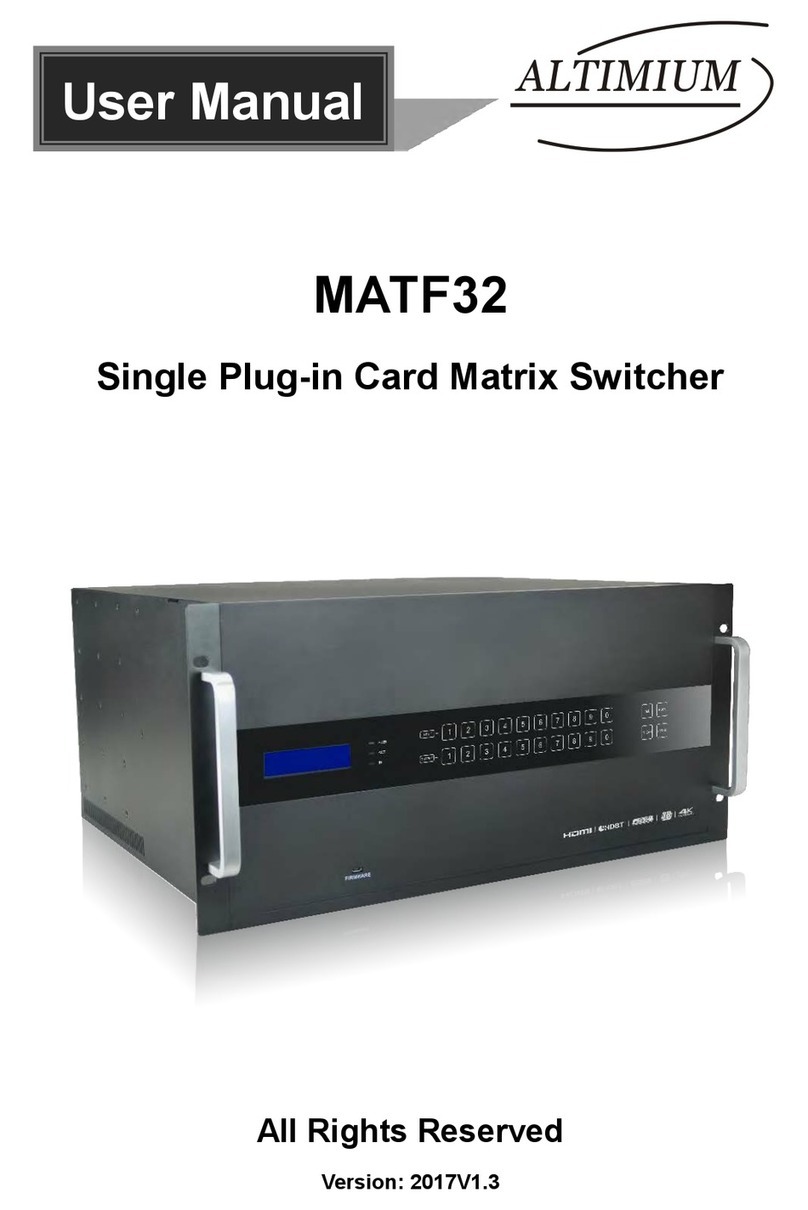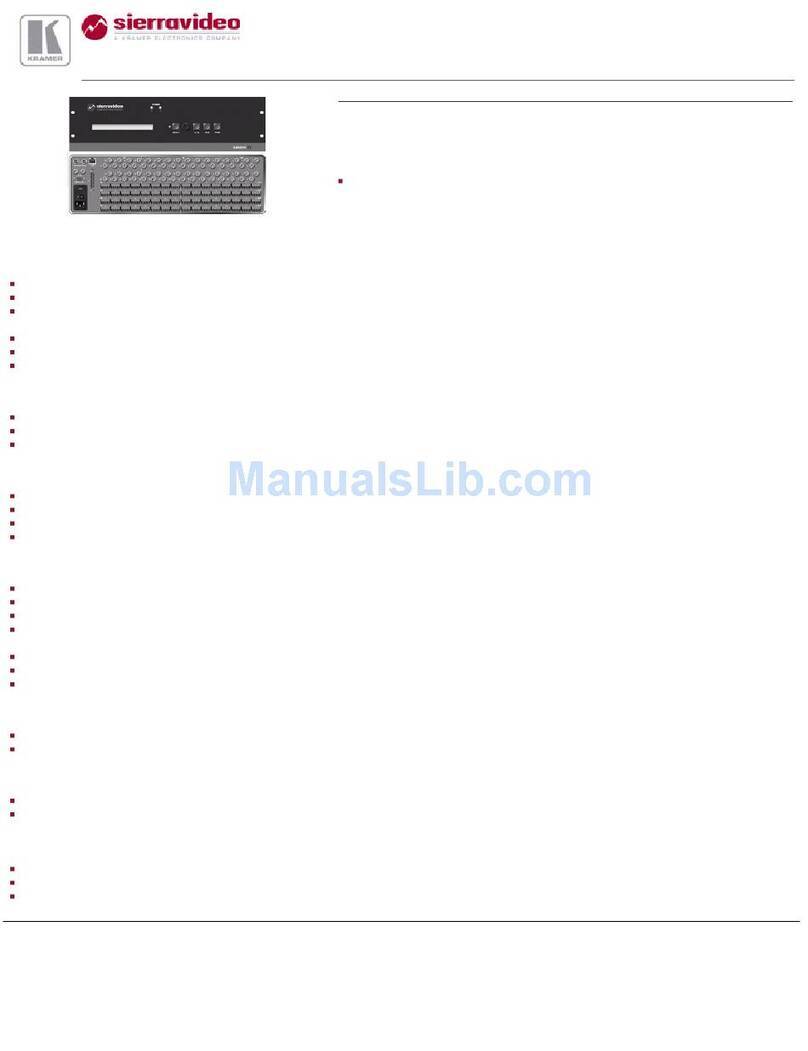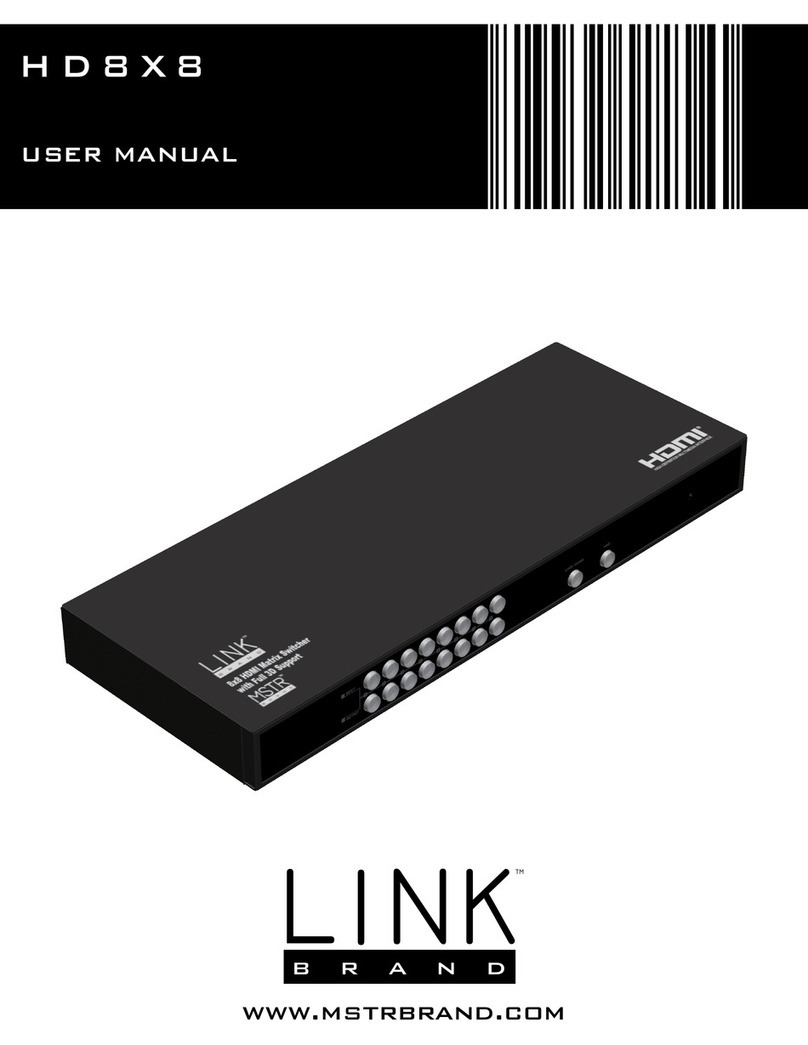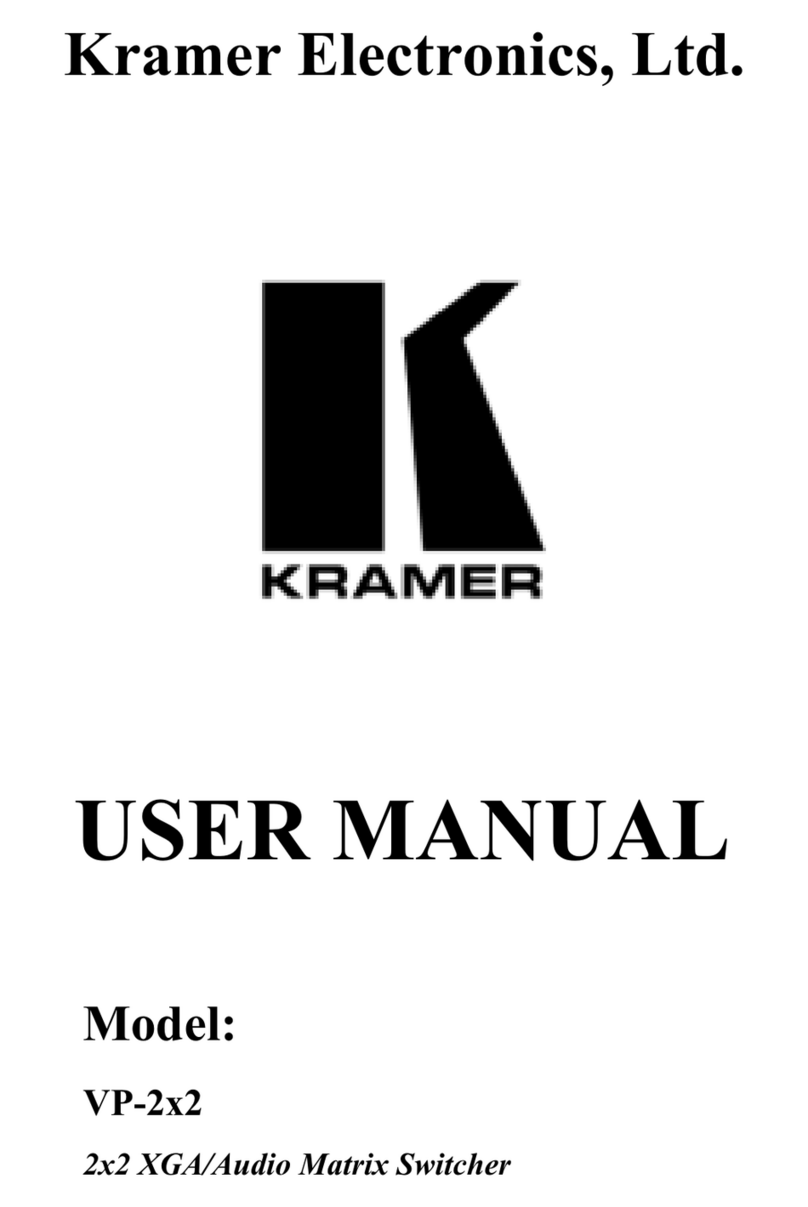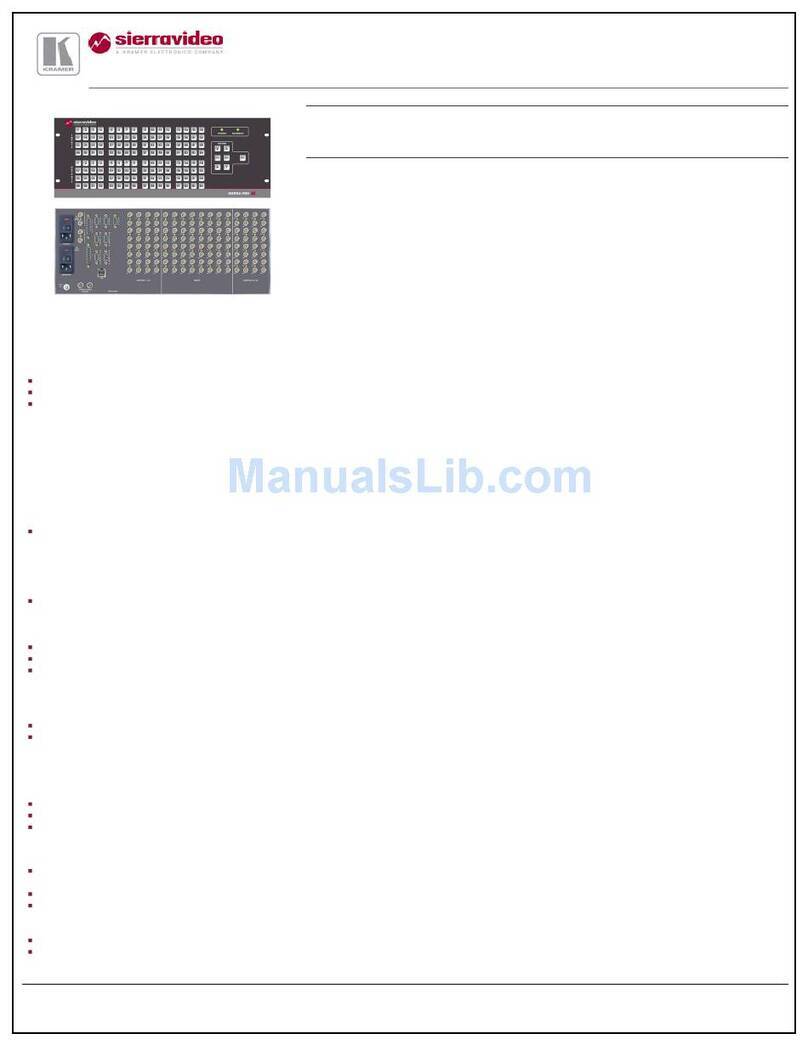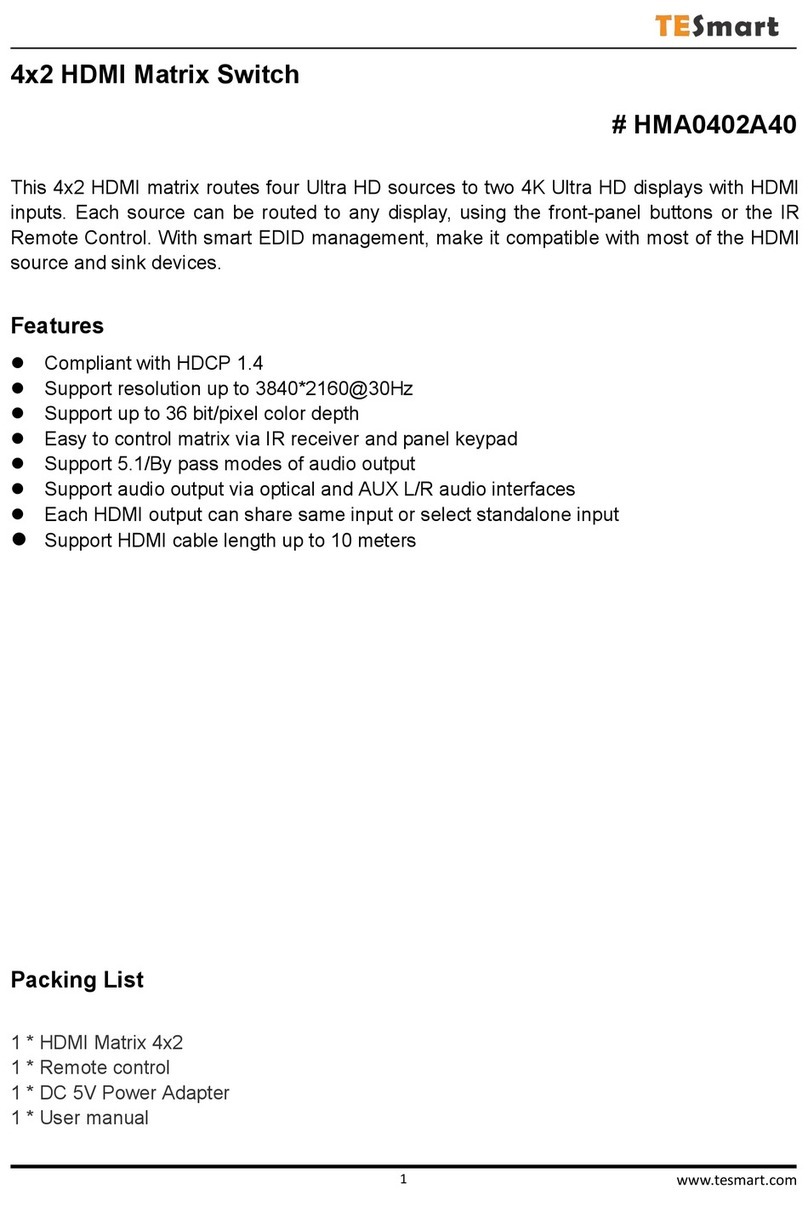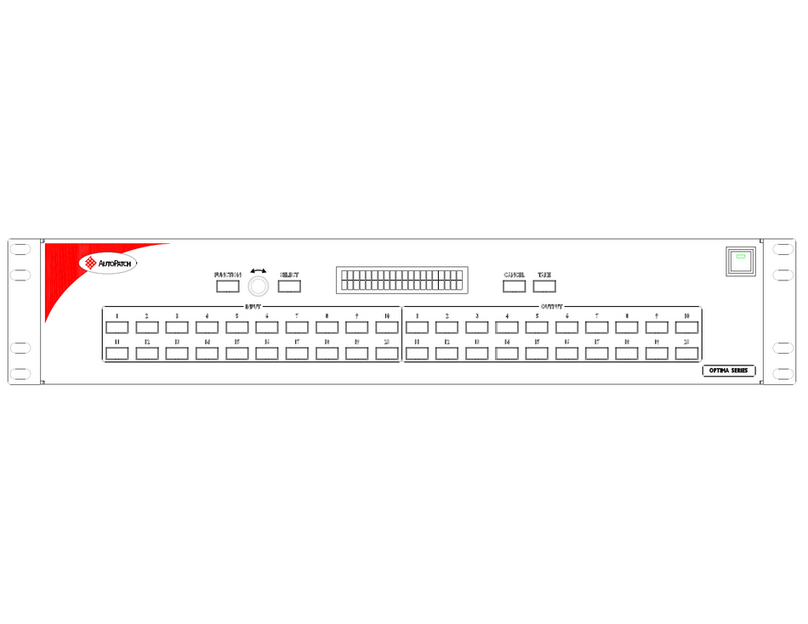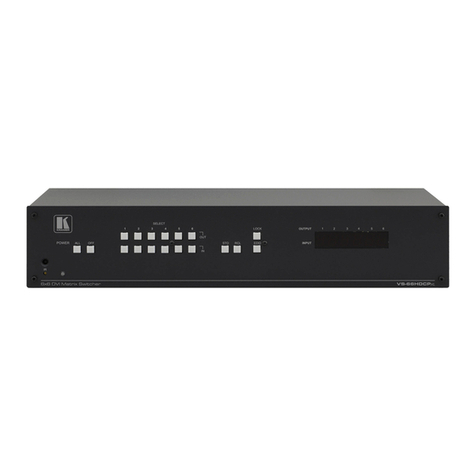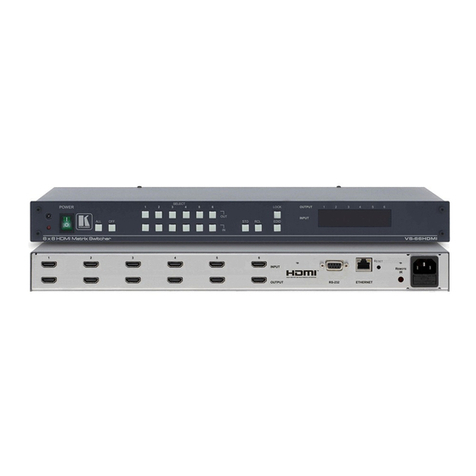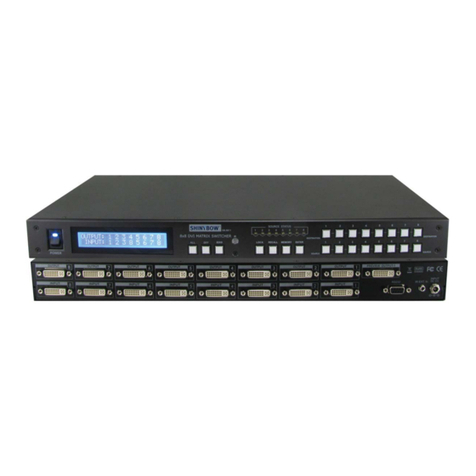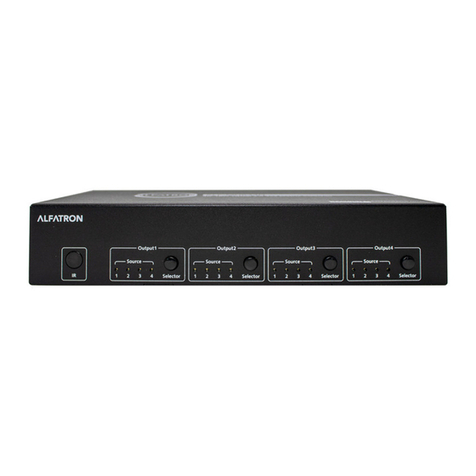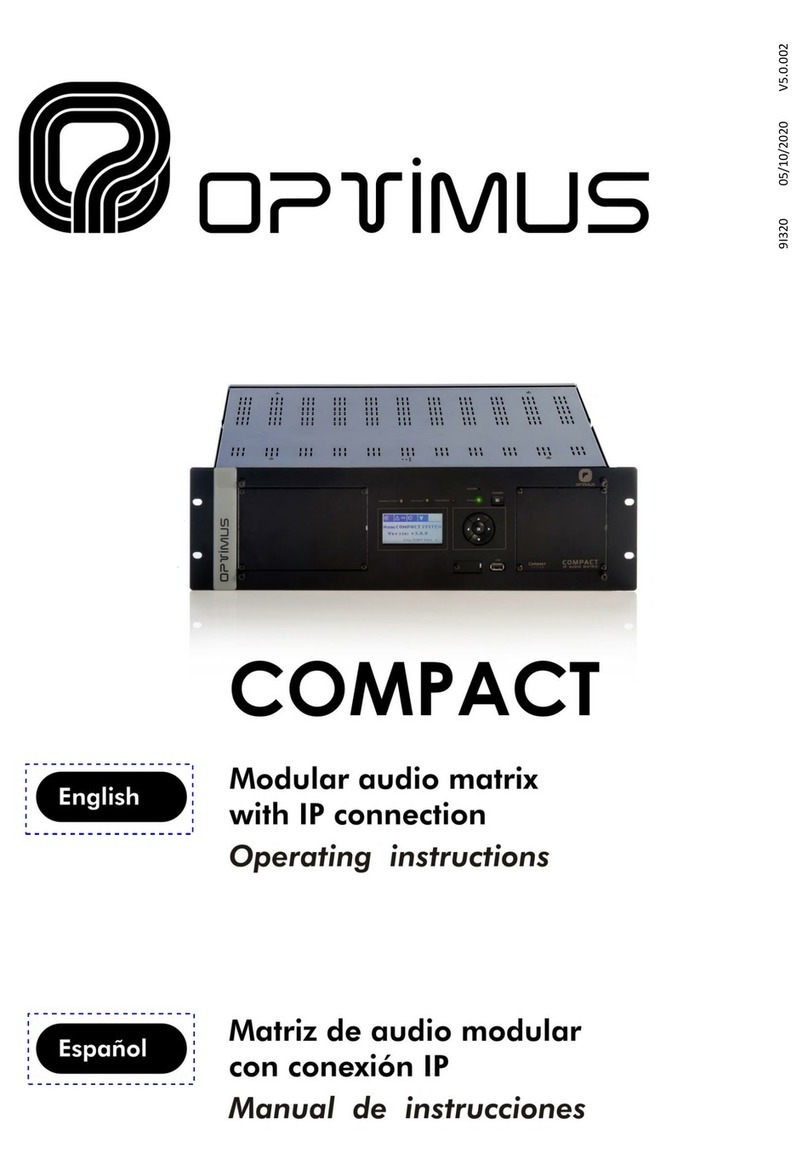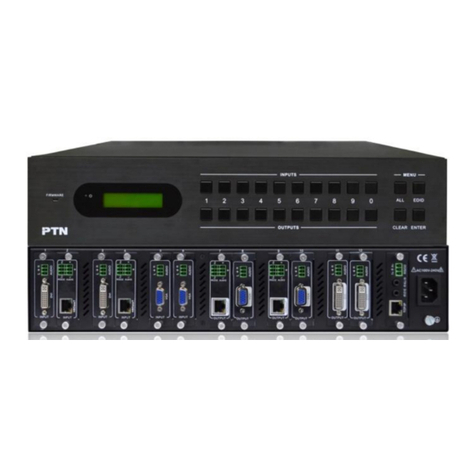
4
6.2 Rear Panel
DC 24VLAN
LINE OUT
OUT
HDMI B HDMI A
IN
HDMI 1 HDMI 2 RS-232
CTL CLI
USB-C
21 3 4 5 6 7
1 USB-C IN Port: Connect to USB Type-C host or video source equipment
such as a PC or laptop. When the USB-C port has “Super Speed”
support active, this port can support 4K30 A/V, Ethernet, and USB
simultaneously. When “Super Speed” is disabled, this port will support
full bandwidth 4K60 A/V content but USB data functionality will be limited
to USB 2.0 levels.
Note: Not all devices with USB Type-C ports can support video output.
Please verify that the device supports video output from the USB Type-C
port before attempting to use it as a video source.
2 HDMI IN 1 & 2 Ports: Connect to HDMI source equipment such as
media players, game consoles, or set-top boxes. DVI sources are
supported with the use of an HDMI to DVI adapter.
3 HDMI OUT A & B Ports: Connect to HDMI TVs, monitors, or amplifiers
for digital video and audio output.
4 LINE OUT Port: Connect to powered speakers, headphones, or an
amplifier for analog stereo audio output extracted from the selected
HDMI output (LPCM 2.0 sources only).
5 RS-232 CTL 4-pin Terminal Block: Connect to the device you wish to
control via a 3-pin adapter cable to receive event automation RS-232
commands from the unit.
RS-232 CLI 4-pin Terminal Block: Connect directly to a PC, laptop, or
other serial control device with a 3-pin adapter cable to send RS-232
commands to control the unit.
Note: The 24 volt pins are included to provide power to a dedicated
external control product and should NOT be used when connecting a
standard RS-232 device.
6 LAN Port: Connect directly, or through a network switch, to your PC/
laptop to control the unit via Telnet/WebGUI and to extend the network
across the USB Type-B and Type-C ports.
Note: The USB Type-C port must be in “Super Speed” mode to support
Ethernet extension.
7 DC 24V Port: Plug the 24V DC power adapter into this port and connect
it to an AC wall outlet for power.
